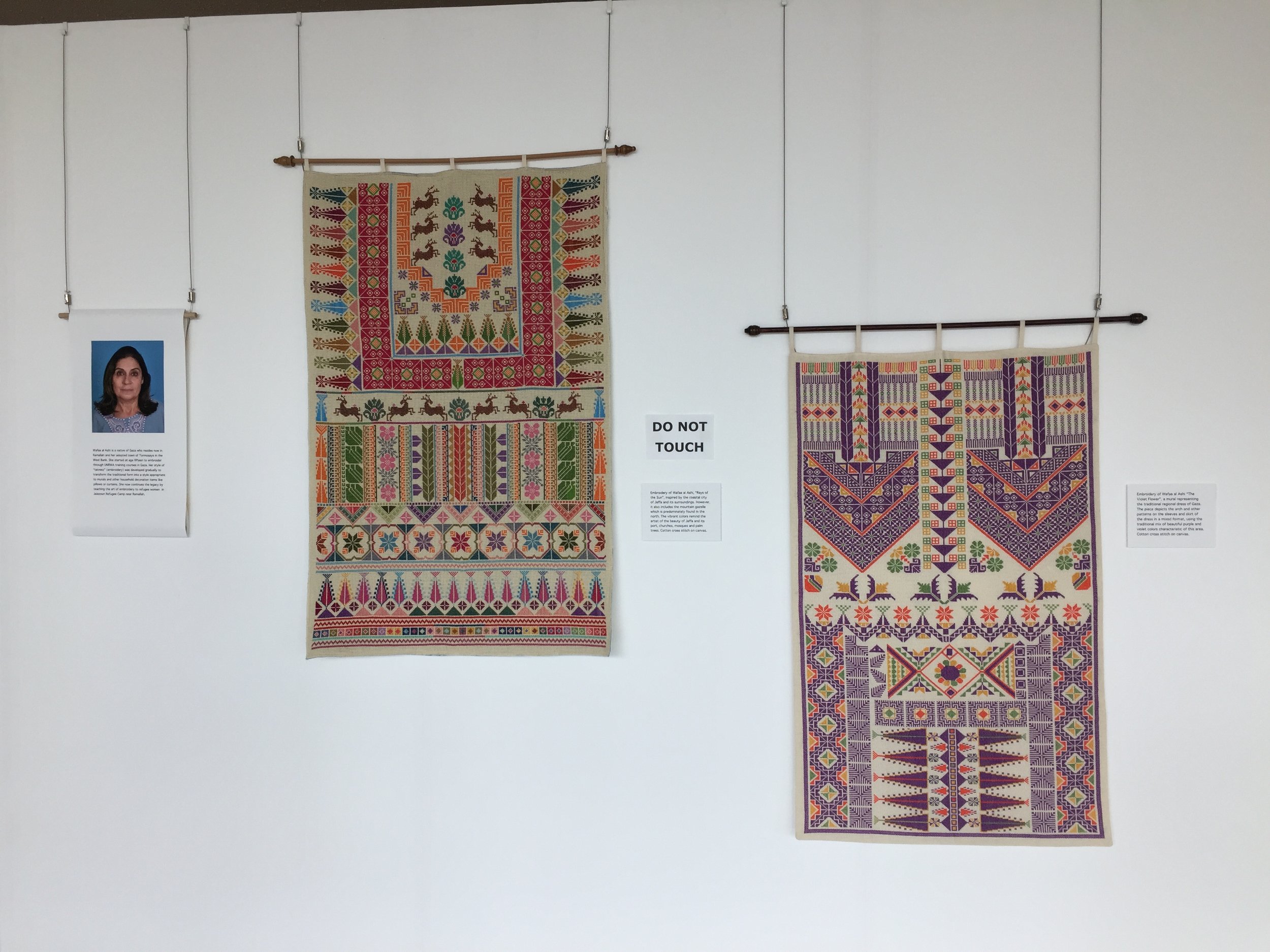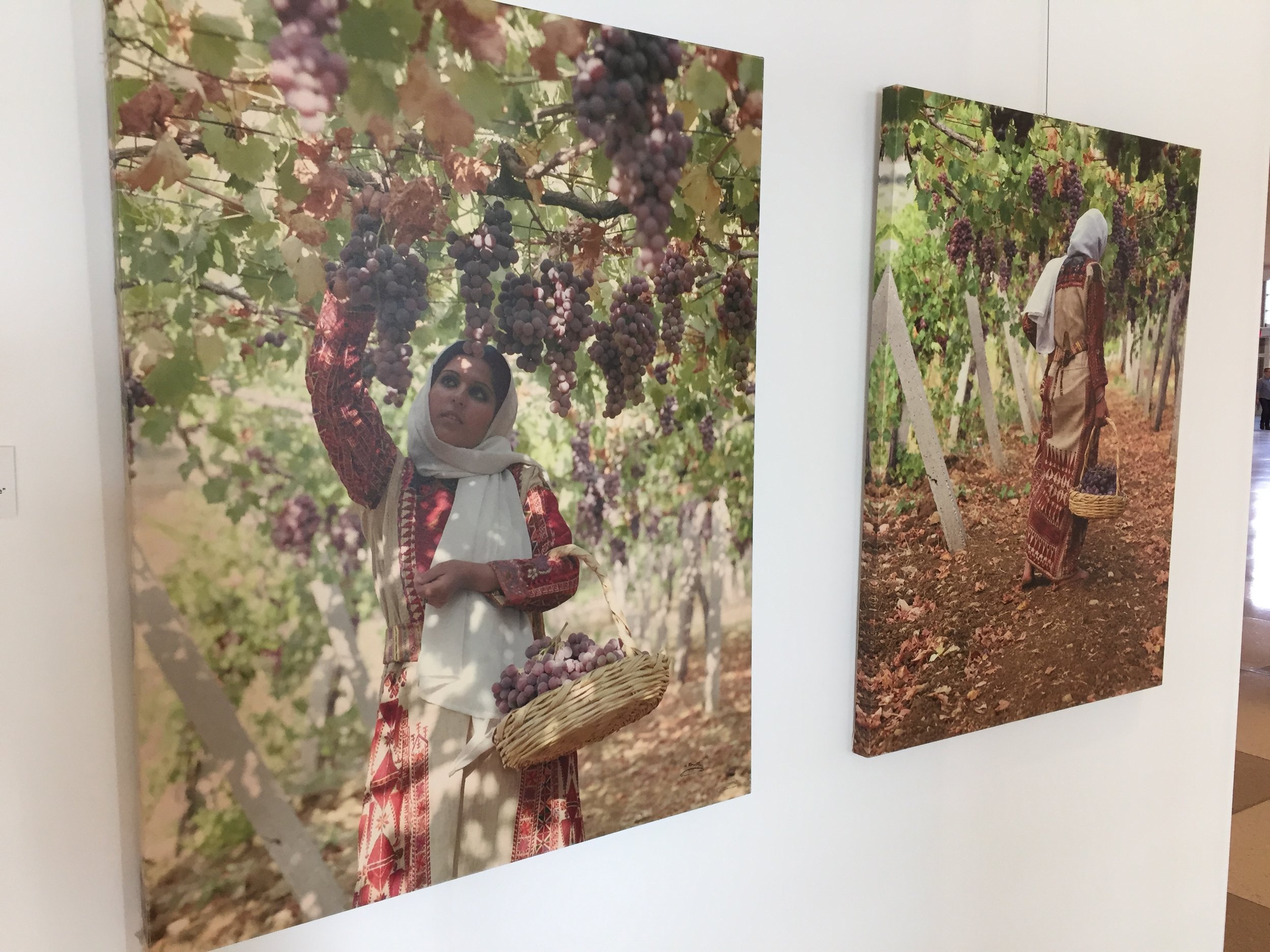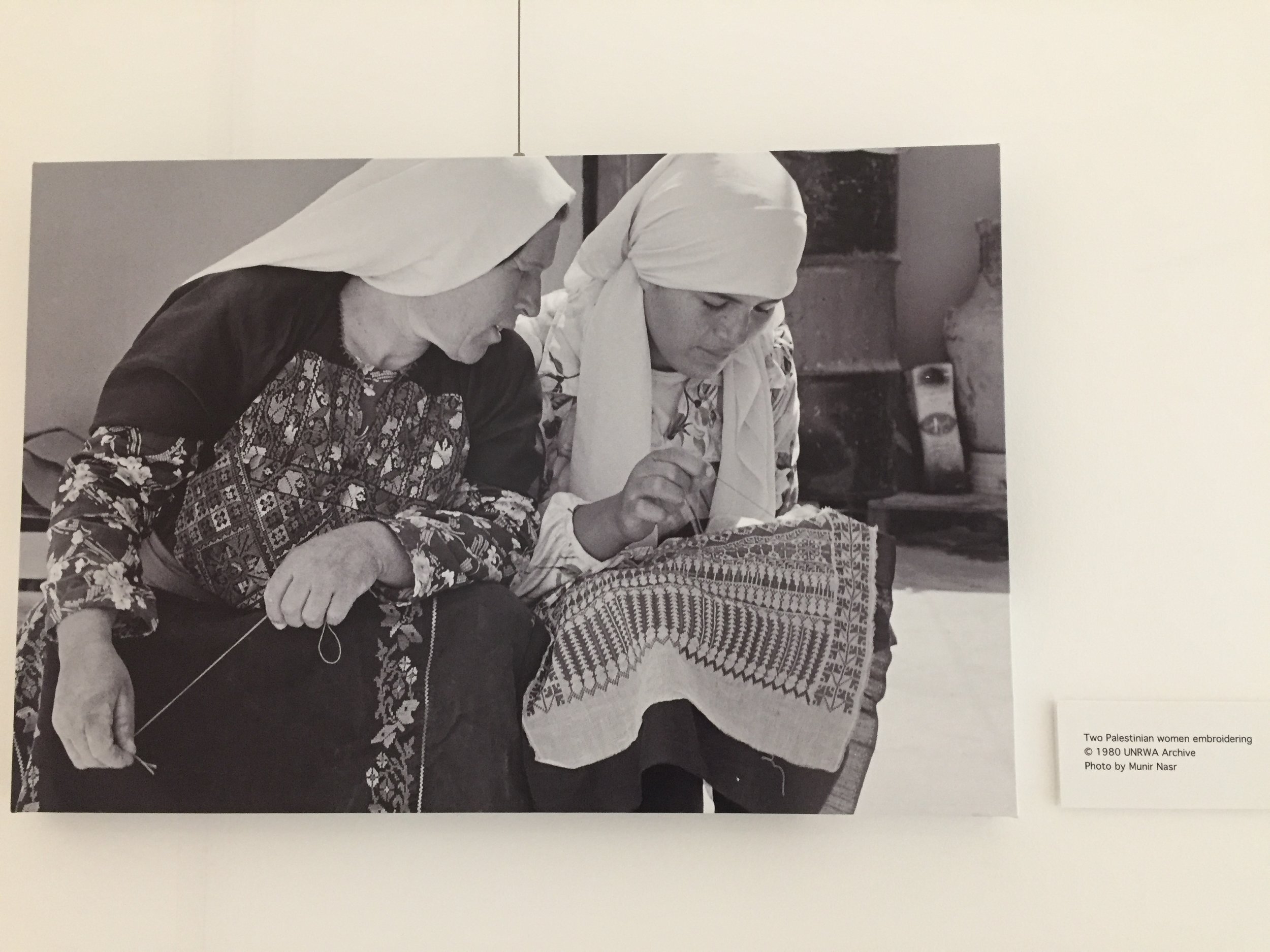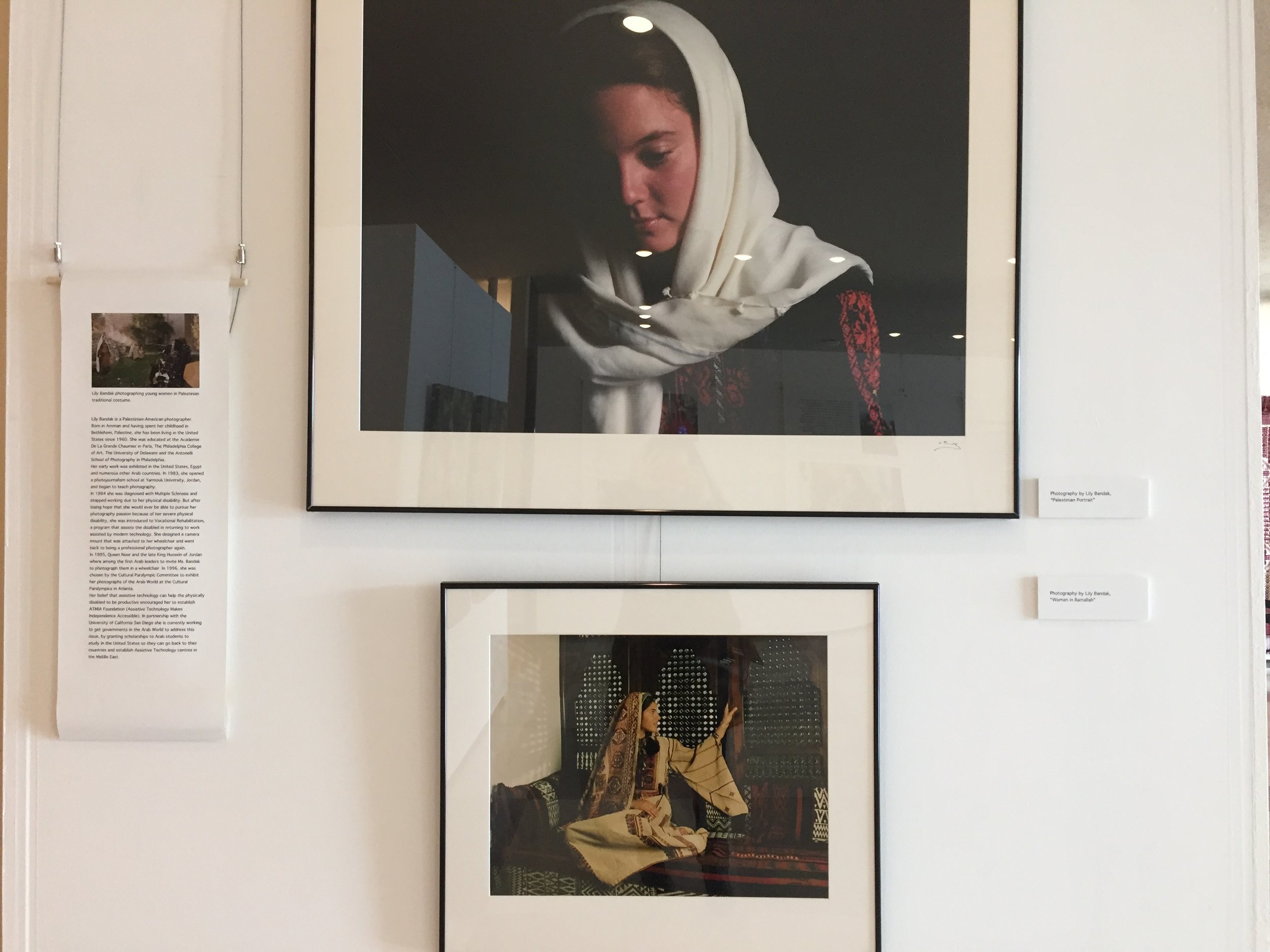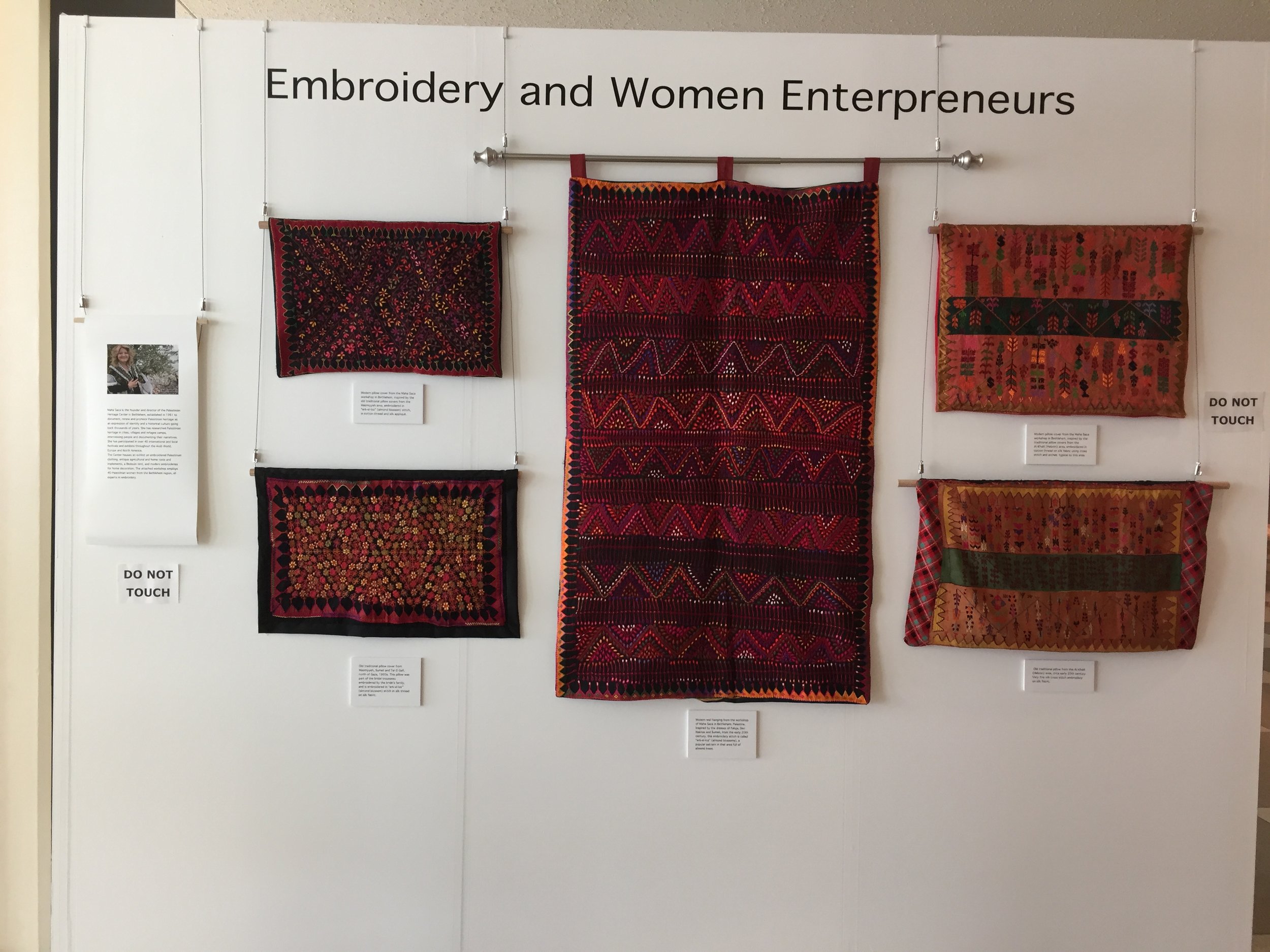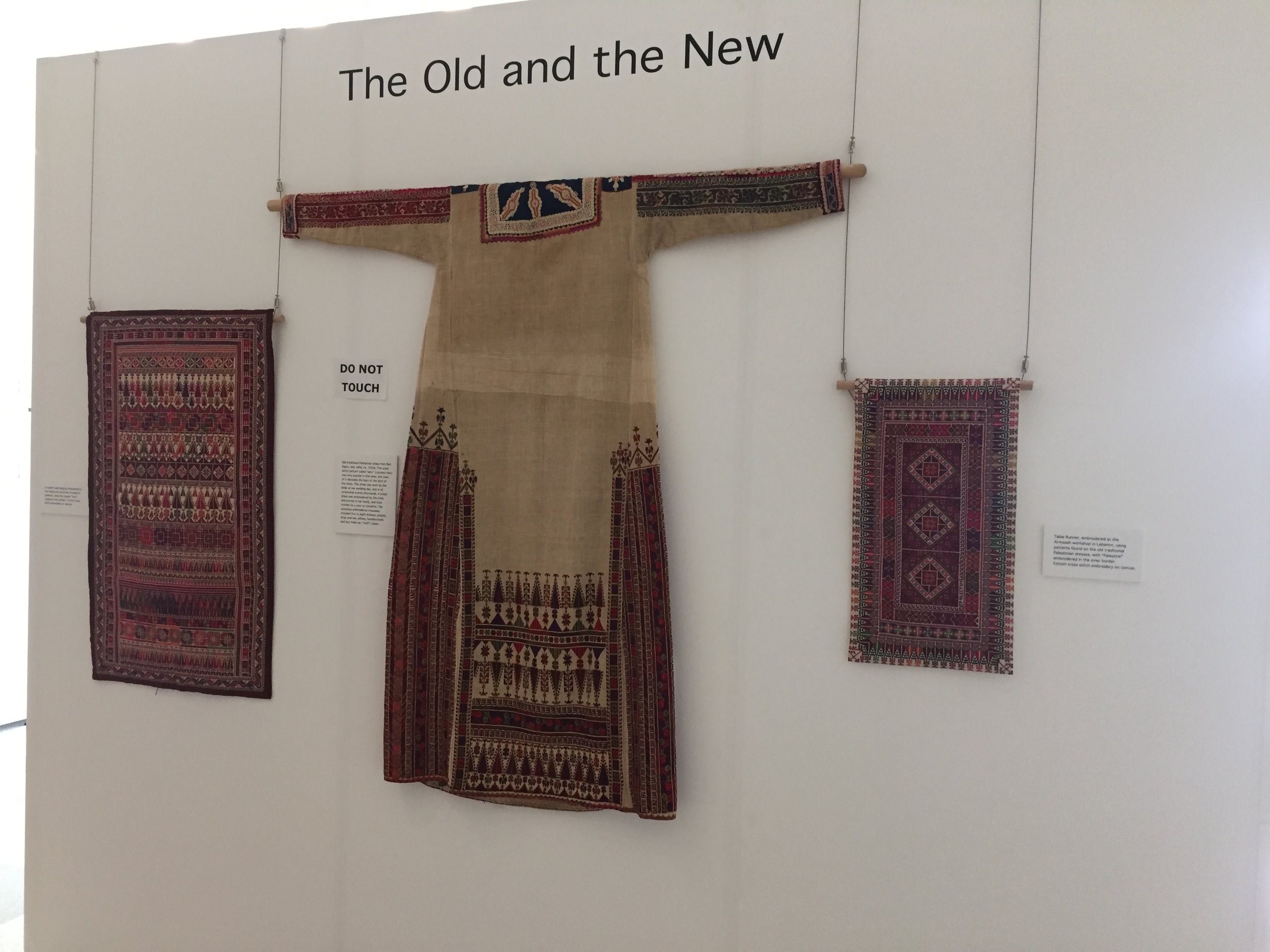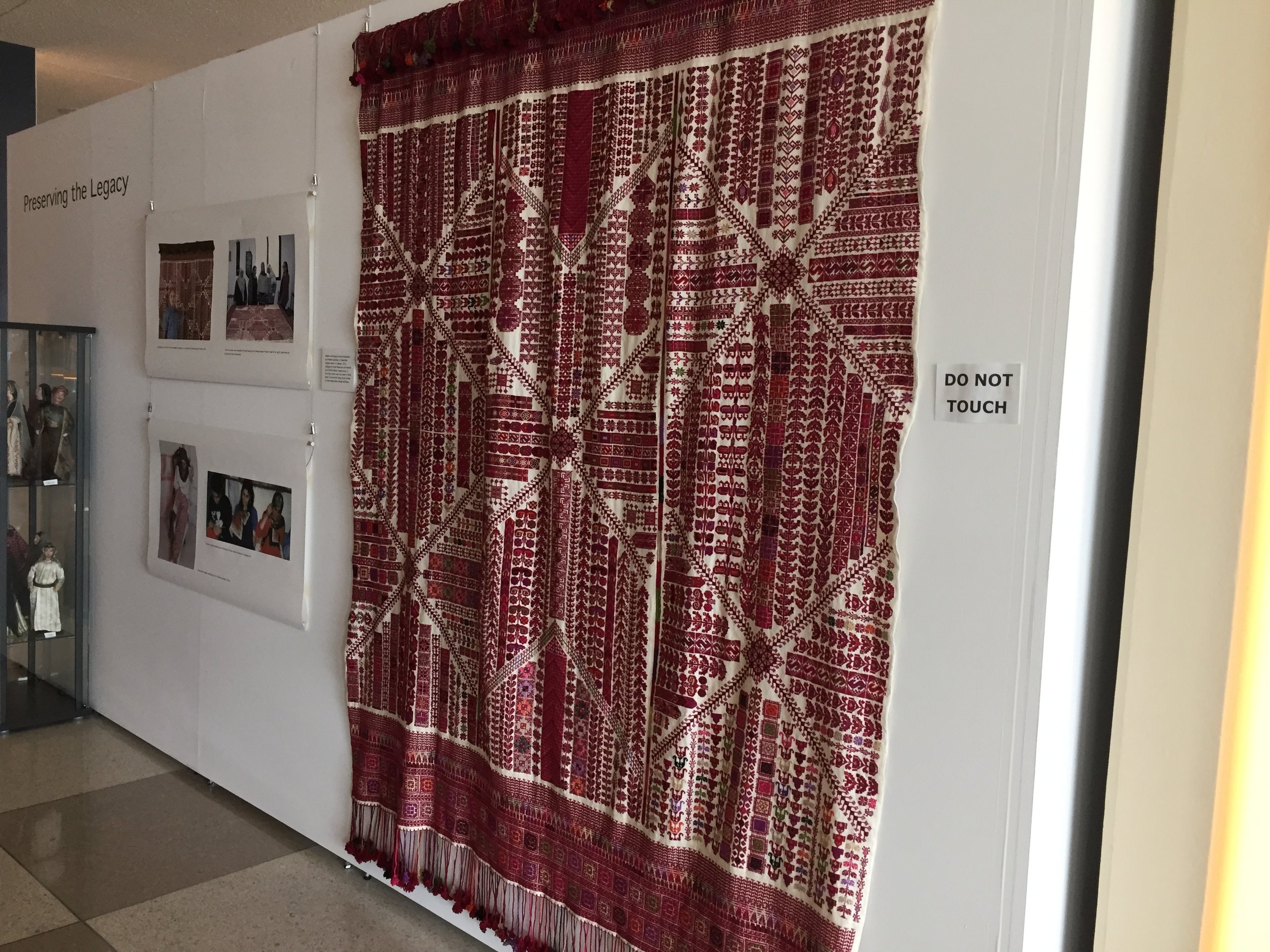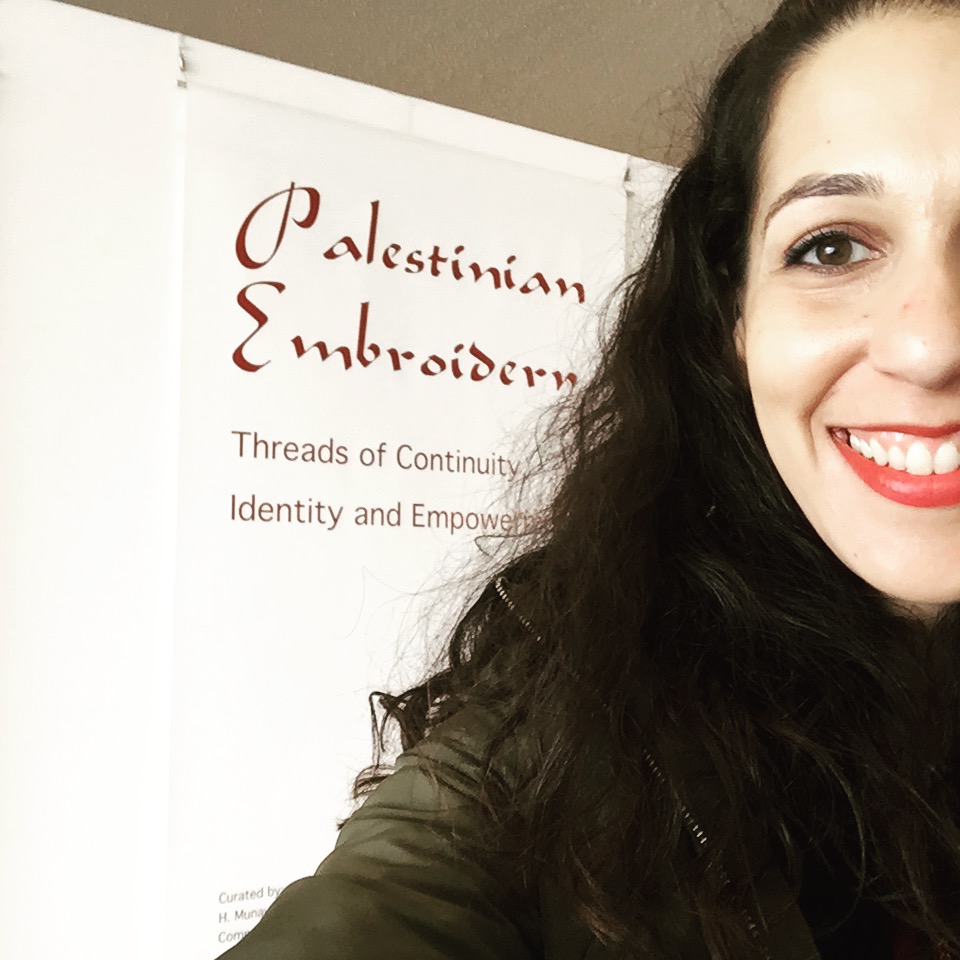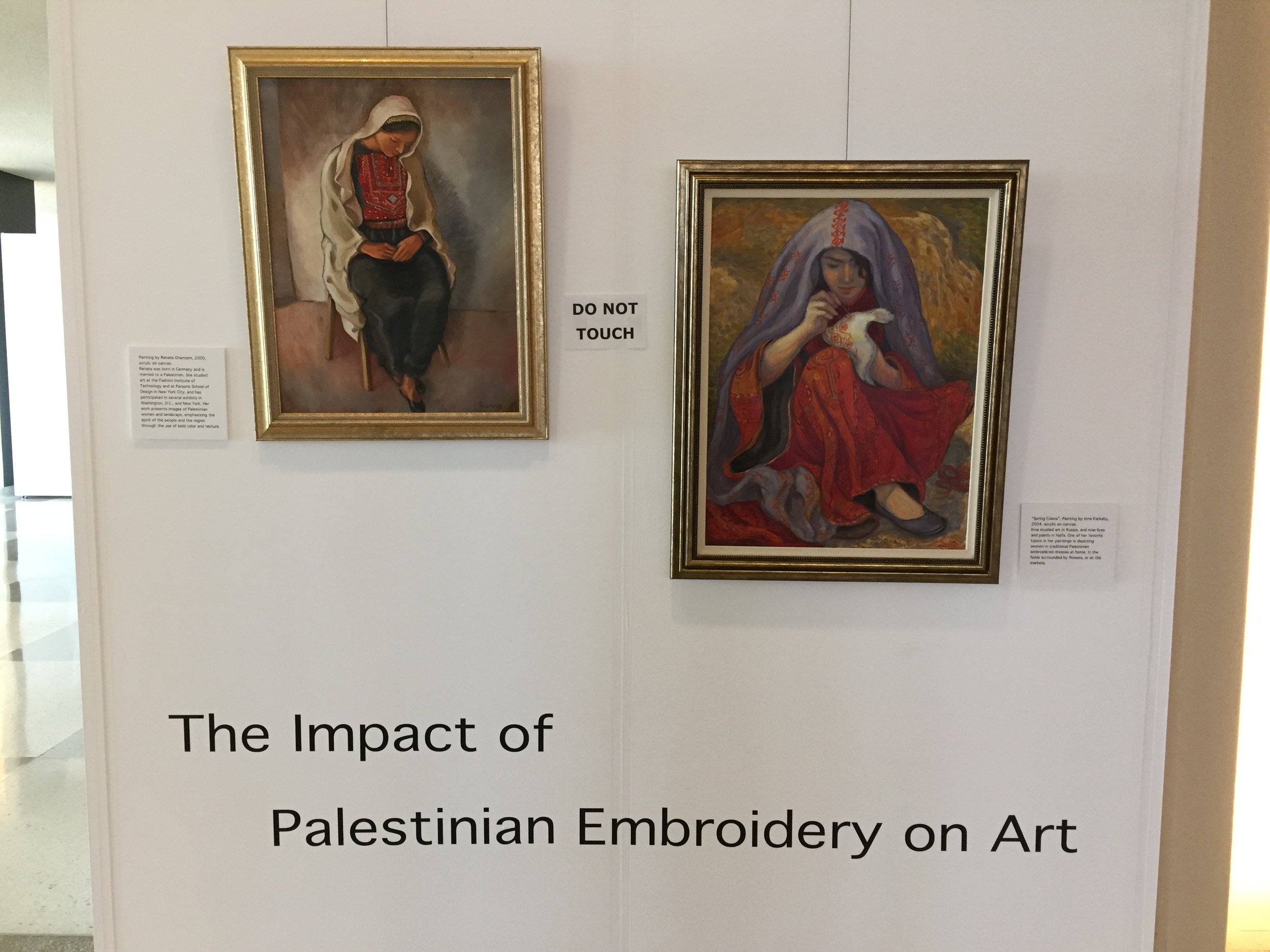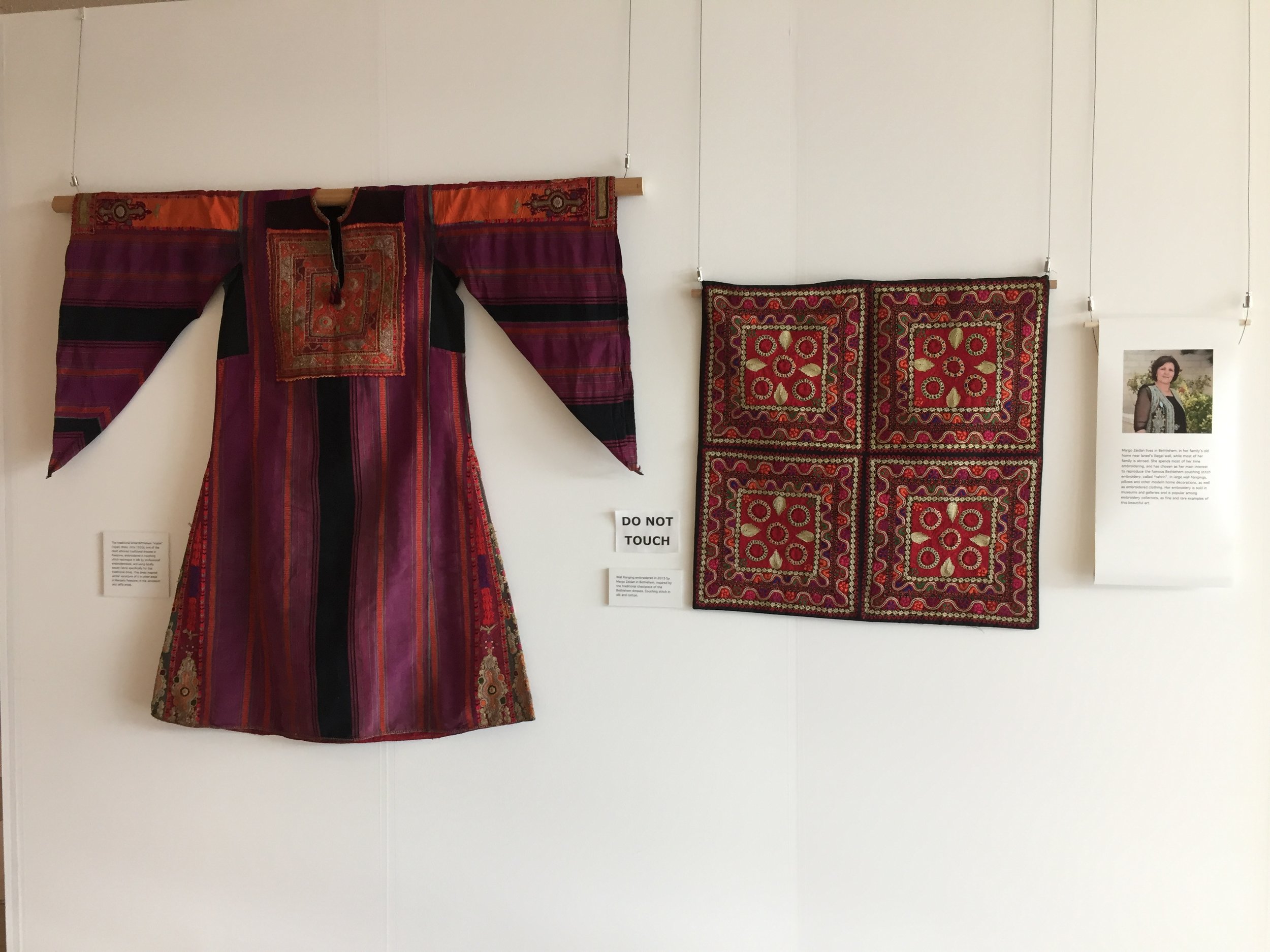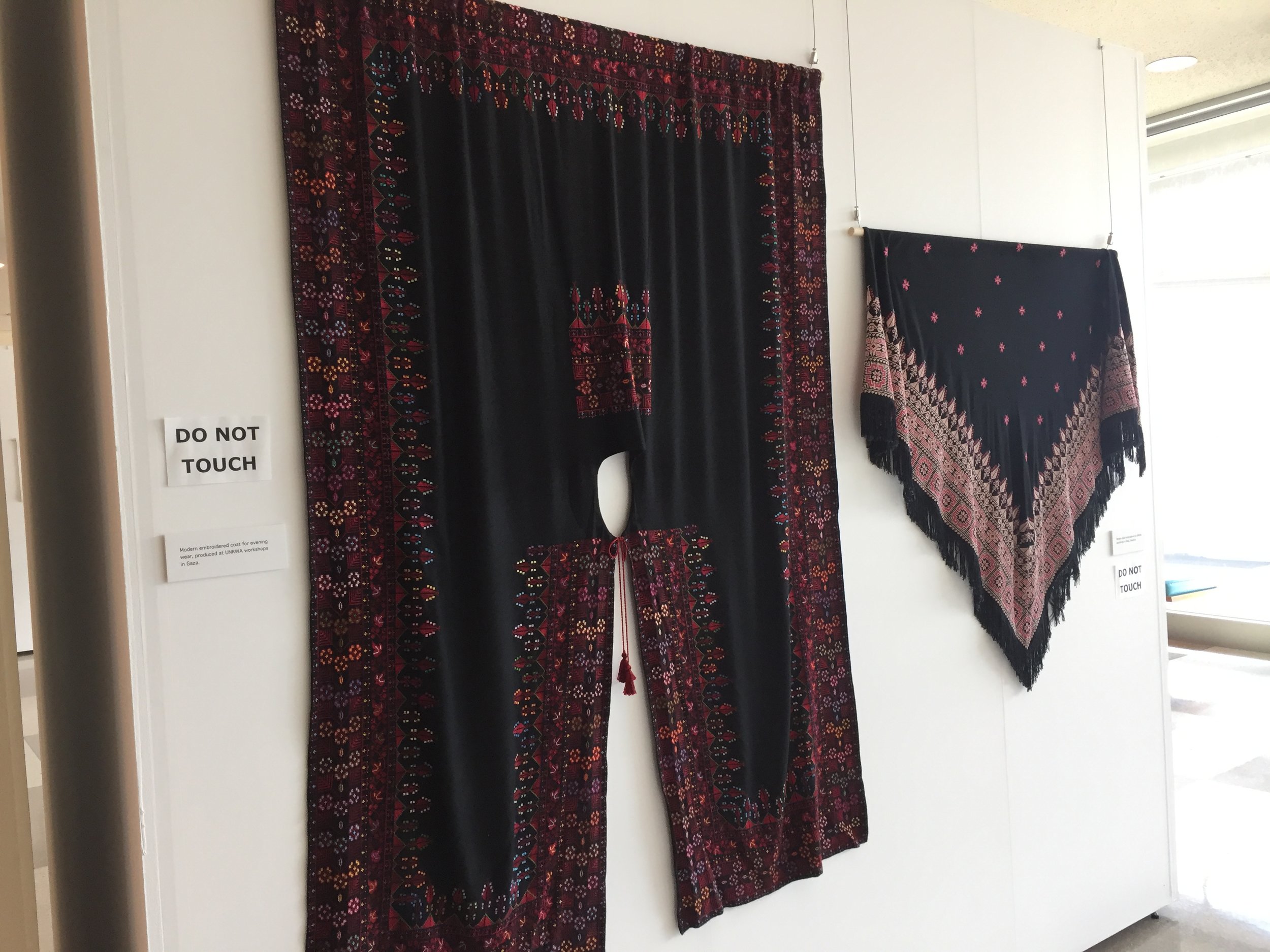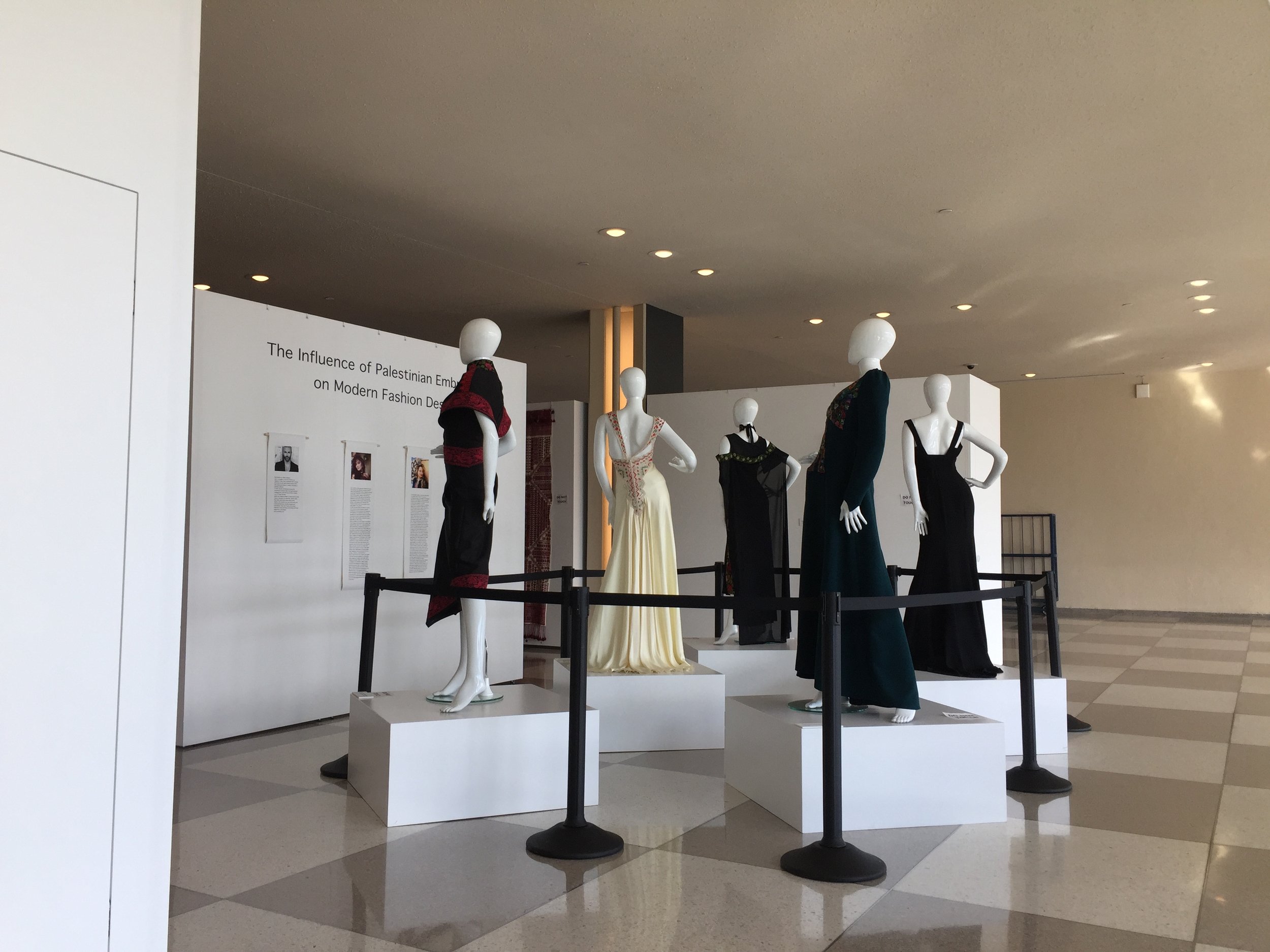The United Nations of Tatreez
/By: Nadia Abuelezam
I didn’t grow up embroidering or knowing how to do any Palestinian handiwork. I only really started to appreciate Palestinian tatreez when I was older and understood it’s importance. The stitches weave the present and the past together. It is tradition, it is culture, and it is politics all summed up into fabric. It is primarily a women’s craft, the women’s voice and story looping through history, conflict, and war.
When I heard about the exhibit “Palestinian Embroidery: Threads of Continuity, Identity, and Empowerment” at the United Nations General Assembly in New York City from Wafa Ghnaim (#11: Wafa, Missiles, Wheat, and Gardens), I wasn’t sure what the exhibit would contain. But on the last day the exhibit was open, my husband and I made the trek into New York City to it at the United Nations General Assembly. After getting our guest passes and walking into the UN compound, my heart was racing. “Was this exhibit going to represent Palestinians in a good light? Would it be stuffed into a corner where only people looking for it could find it? Were there going to be others looking at it? Maybe it was only a poster board worth of material, maybe it wasn’t worth the trip?”
After walking into the lobby, the exhibit stood prominently and proudly on the left hand side. I was so excited and thrilled to see the rows of artwork, embroidery, and pictures illustrating and highlighting the history of embroidery in Palestine and the influence tatreez has had on fashion, art, and politics. Since the exhibit has ended, the pictures below aim to show you some of the work that was on display, in case you were not able to see it in person.
I felt empowered by this exhibit. I felt empowered when I walked in and saw “Palestinian” written prominently in the lobby of the United Nations General Assembly. I thought “that’s me!” Those are my people. We are more than victims, we are more than people fighting for their homes and their land. We are more than just political pawns in a larger and seemingly never ending war. We are a people with history, culture, and tradition that has survived centuries.
So, yeah, maybe it was just an exhibit in the lobby of the United Nations General Assembly in New York that only a few hundred or thousand people saw. But for me, it was a symbol of something more, of tides changing, of recognition which may, someday, turn into rights, freedom, and undeterred existence.

